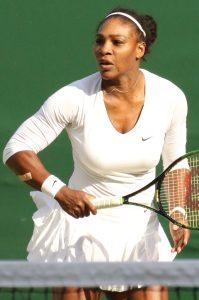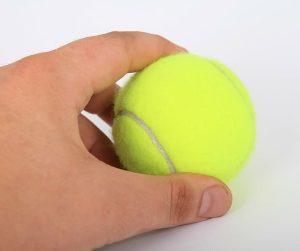We may earn money or products from the companies mentioned in this post.
Brief Overview of Tennis Ranking Systems

In the world of tennis, ranking systems play a vital role in determining a player’s standing and level of competitiveness These systems provide a hierarchical structure that ranks players based on their performance in various tournaments and matches
Rankings matter in tennis for several reasons Firstly, they help determine the seedings for tournaments, ensuring that higher-ranked players receive favorable draws and avoid facing each other in the early stages This adds an element of fairness to the competition
Additionally, rankings allow players to track their personal improvement and progress over time It serves as a benchmark to gauge one’s performance against fellow competitors and provides motivation to strive for higher positions in the rankings
Purpose of the Blog Post

The purpose of this blog post is twofold: firstly, to help readers gain a better understanding of different ranking systems used in professional tennis; and secondly, to provide actionable steps that can be taken to improve one’s rank within these systems
Understanding Different Ranking Systems
Tennis employs different ranking systems across various governing bodies such as the Association of Tennis Professionals (ATP) for men’s singles, doubles, and mixed doubles; Women’s Tennis Association (WTA) for women’s singles, doubles, and mixed doubles; International Tennis Federation (ITF) for junior players; and more
Each ranking system has its own set of criteria based on factors like tournament category, match results, points earned or lost per match, surface type preferences, and duration within which points are valid Familiarizing oneself with these nuances is crucial for grasping how rankings are calculated under each system
Steps to Improve One’s Rank
If you’re looking to enhance your ranking within the tennis world, there are several steps you can take to maximize your chances of climbing up the ladder
Firstly, focus on consistent tournament participation and performance The more matches you play and win against higher-ranked opponents, the more points you’ll earn towards improving your rank It’s essential to carefully select tournaments that align with your skill level and aspirations
Secondly, work on developing a well-rounded game This includes improving technical skills, physical fitness, mental resilience, and strategic acumen A versatile player who can adapt to different playing conditions and styles of opponents is likely to have an edge in climbing up the rankings
In addition to on-court performance, off-court factors such as injury prevention, maintaining a balanced lifestyle, and effective time management are also crucial for sustained success Taking care of these aspects will ensure you can consistently perform at your best and avoid setbacks that could hinder your ranking progress
Getting Familiar with Tennis Ranking Systems

Tennis ranking systems play a crucial role in assessing players’ skills and abilities, enabling fair competition and providing a benchmark for improvement Two popular ranking systems are the Universal Tennis Rating (UTR) and the National Tennis Rating Program (NTRP). Let’s delve into these systems to better understand how they work and their benefits
Universal Tennis Rating (UTR)
The UTR is a comprehensive ranking system that evaluates players based on their match performance It takes into account various factors, such as the outcome of matches, sets won or lost, games won or lost, and even points won or lost within games This meticulous evaluation ensures a fair representation of a player’s ability
In addition to match performance, the UTR adjusts ratings based on opponent skill level and tournament strength Beating higher-ranked opponents or performing well in highly competitive tournaments boosts a player’s rating more significantly than victories against lower-ranked opponents or participation in less competitive events
The UTR calculates separate ratings for singles matches and doubles matches, acknowledging the unique dynamics of each format This allows players to track their progress accurately in both disciplines
To ensure ratings remain up-to-date, the UTR incorporates a time decay factor into its calculation methodology As time passes, older match results gradually lose significance in determining current skill level
The benefits of the UTR system extend beyond individual player assessment It aligns with global standards, allowing players from different countries to compare their rankings directly Additionally, by promoting competitive matches between players of similar skill levels, it fosters an environment that encourages growth and development within the tennis community
National Tennis Rating Program (NTRP)
The NTRP operates on a different framework compared to the UT It categorizes players into levels ranging from 1 (beginner) to 7 (advanced). Each level corresponds to a specific set of skills and abilities
Understanding NTRP levels is essential for players seeking accurate self-assessment and appropriate competition Level 1 represents beginners who are just starting their tennis journey, while level 7 comprises highly skilled and experienced players
The NTRP provides detailed descriptions of each level’s skills and abilities This enables players to gauge their own proficiency in various aspects of the game, such as stroke production, shot placement, consistency, power, tactics, and court coverage
In addition to providing predefined levels, the NTRP offers self-rating guidelines These guidelines assist players in evaluating their skills accurately by considering factors like match results against other rated players and overall performance across different playing conditions
Accurate self-assessment is crucial when determining which level of competition to participate in By adhering to the NTRP’s self-rating guidelines, players ensure fair matchups that facilitate growth without overwhelming challenges or unbalanced encounters
Both the UTR and NTRP ranking systems serve as valuable tools for tennis enthusiasts looking to gauge their skill progress accurately and find suitable competitive opportunities Understanding these systems can help individuals navigate the world of tennis rankings more effectively
Improving Your Tennis Rank: Strategies and Tips

Technical Skills Development
When it comes to improving your tennis rank, mastering the fundamentals is key Whether it’s your serve, groundstrokes, net game, or footwork, focusing on specific areas for improvement can have a significant impact on your overall performance One effective approach is to engage in practice drills that target these skills directly By dedicating time and effort to enhancing your technical abilities, you’ll be better equipped to handle various game situations
In addition to individual practice sessions, working with certified coaches or experienced players can provide valuable insights and guidance They can identify areas where you may be struggling and offer tailored advice on how to overcome challenges Their expertise and experience can help you refine your technique and take your game to the next level
Mental Strength Training
Tennis is not just about physical ability; mental toughness plays a crucial role as well Recognizing this importance is the first step towards improving your tennis rank Developing focus, resilience, and emotional control are essential aspects of mental strength training
Mindfulness techniques can help improve focus by teaching you how to stay present in the moment during matches By practicing mindfulness regularly, you’ll be able to maintain concentration even in high-pressure situations
Positive self-talk is another powerful tool for building mental strength By cultivating a positive inner dialogue, you can boost confidence and overcome self-doubt during matches
Setting realistic goals is also vital for maintaining motivation and measuring progress accurately By breaking down larger objectives into smaller milestones, you’ll have a clearer roadmap for improvement
Competitive Experience
To truly enhance your tennis rank, gaining competitive experience is essential Participating in tournaments and leagues allows you to put your skills to the test against different opponents with varying playing styles This exposure will help you understand your strengths and weaknesses, enabling you to fine-tune your strategies accordingly
Finding suitable practice partners is crucial for simulating match-like conditions during training Playing against players of similar or higher skill levels can challenge you and push your limits, ultimately leading to improvement
Learning from match experiences is a continuous process in tennis Analyzing both wins and losses can provide valuable insights into areas that require further refinement By adjusting strategies based on what works and what doesn’t, you’ll be better equipped to tackle future opponents
In conclusion, improving your tennis rank requires a holistic approach that encompasses technical skills development, mental strength training, and competitive experience By dedicating time and effort to these areas, you’ll be well on your way to reaching new heights in your tennis journey
Tracking Your Progress and Adjusting Your Goals

When it comes to improving your tennis skills, tracking your progress and adjusting your goals are essential steps on the journey to success By monitoring your UTR or NTRP rating, you can gain valuable insights into your performance and make informed decisions about areas that need improvement
Monitoring your UTR or NTRP rating
Regularly checking for updates on your UTR or NTRP rating is a crucial part of tracking your progress These ratings provide an objective measure of your skill level and allow you to compare yourself to players of similar ability By keeping an eye on any changes in your rating, you can gauge how well you’re progressing over time
Setting realistic short-term and long-term goals
To stay focused and motivated, it’s important to set realistic short-term and long-term goals for yourself One effective framework for goal-setting is the SMART approach – Specific, Measurable, Achievable, Relevant, and Time-bound By using this method, you can create goals that are clear, attainable, and aligned with your overall aspirations
Maintaining motivation
Maintaining motivation throughout your tennis journey is key to achieving success Celebrating small achievements along the way can help keep your spirits high and boost morale when faced with challenges Additionally, reminding yourself of the personal reasons why you play tennis – whether it’s for the love of the game or the joy it brings – can reignite that fire within you even during tough times
In summary,
– Tracking your UTR or NTRP rating allows you to monitor progress objectively
– Setting SMART goals helps ensure they are achievable and aligned with aspirations
– Celebrating small achievements keeps motivation high
– Remembering personal reasons for playing tennis provides a source of inspiration
Useful Links

What Are The Tennis Levels? Explained By Pro
Men’s Tennis Ratings, Rankings, and Recruiting Guidelines
How to Find Out My Tennis Skill Level
USTA Ratings: National Tennis Rating Program (NTRP) …
Ten Things to Understand About NTRP Ratings
What’s Your Number? UTR vs NTRP vs ITN
Do High School Tennis Players Get Ranked
How to Figure Out Your Pickleball Rating in 3 Steps
How do you determine your level/rank? : r/tennis
First ATP point – how to score it. | Chiropractor North Sydney
What’s my level? – Tennis British Columbia
LTA Rankings & Understanding Ranking Points
What is My Pickleball Skill Rating? Take This Quiz to Get …
How to Quickly Find Your Top 6 USTA Tournament Results …
ITN Mean & Categories
national tennis rating program (ntrp)
USTA Ratings, RF!
Universal Tennis: Transforming Sports Globally






